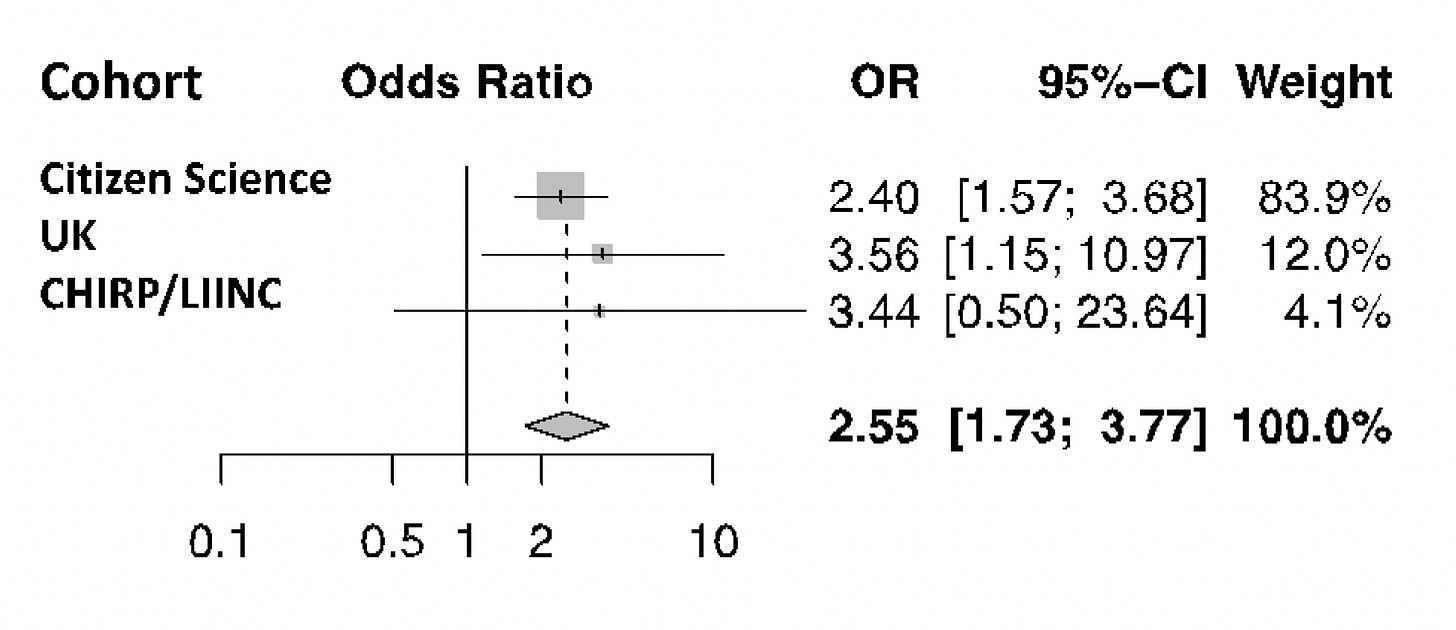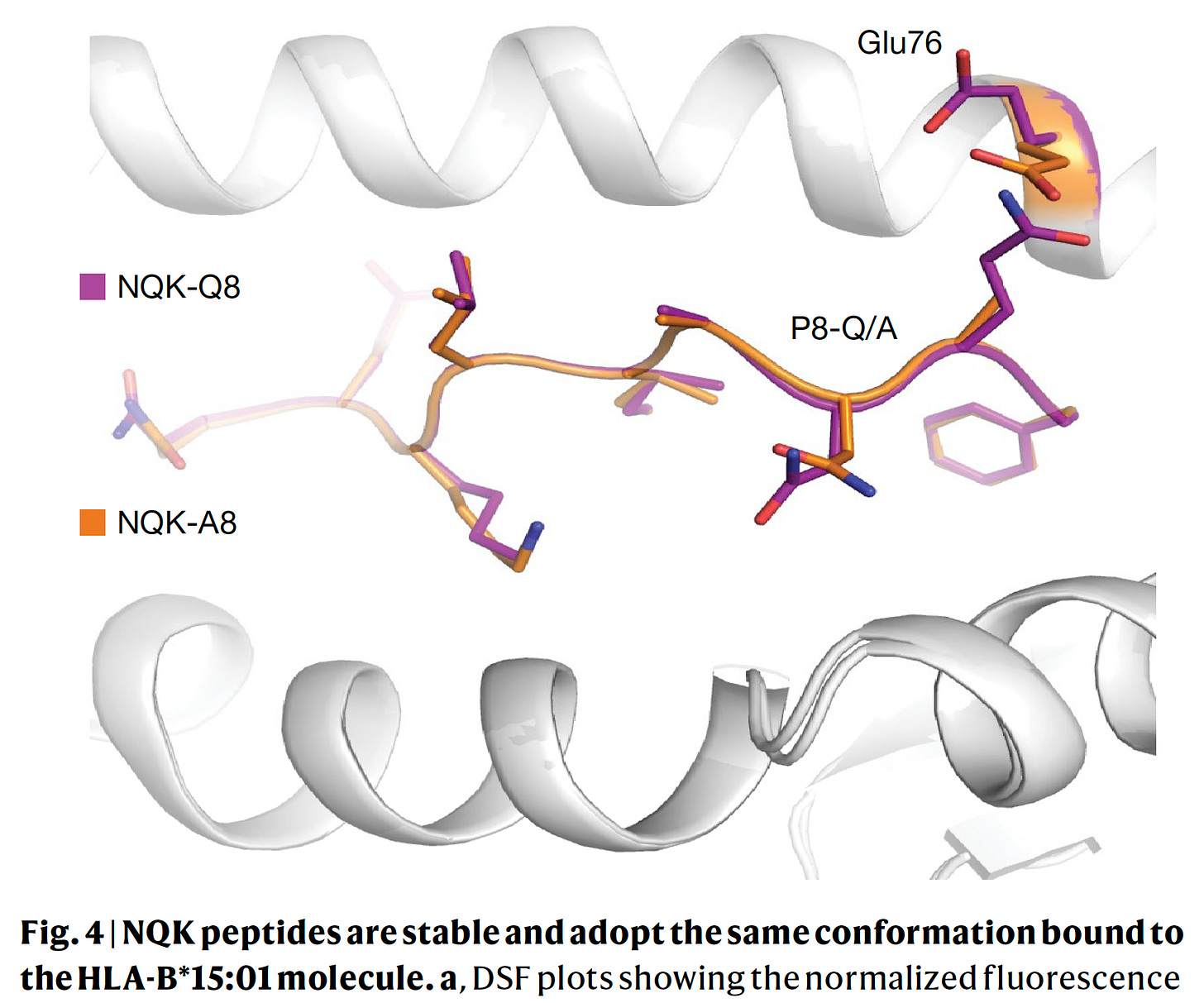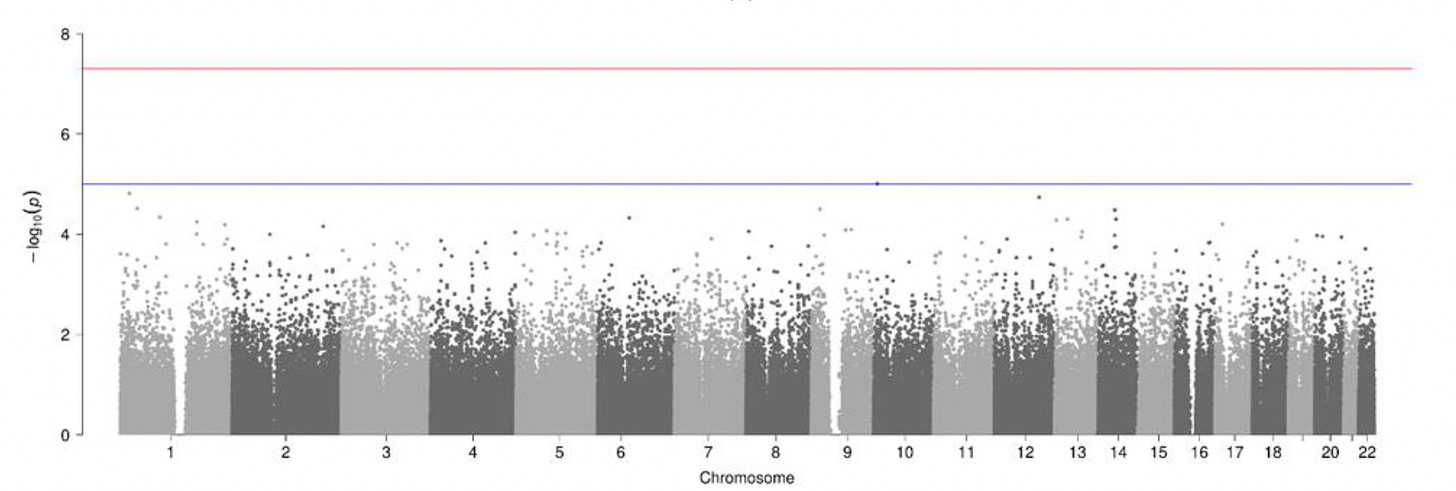From Asymptomatic Covid to Long Covid: Major Advances in Genetic Underpinnings
Today in Nature a groundbreaking and compelling report on the genomics of why some people do not manifest symptoms of Covid. And last week 2 papers (here and here) on the genetics of Long Covid. This represents genetic probes for the extreme of the clinical spectrum—from not exhibiting symptoms of SARS-CoV-2 infection to developing a debilitating, chronic condition. In this edition of Ground Truths, I’ll review the 3 new studies and contextualize their importance.
The Genomics of People Without Symptoms of Covid
Since the pandemic began, asymptomatic Covid has been a particular interest of mine, given its pivotal role in spreading infections and the likelihood that host genetics protect some individuals from ever getting sick. My colleague, Danny Oran, and I wrote extensively on this topic, with review papers in Annals of Internal Medicine, with an overall estimate rate of about 30%. We’ve all wondered why some people, even after close and protracted exposure to others with significant Covid illness, do not ever develop symptoms.
In order to identify the genomic variants that may play a role in these clinical phenotypes, a genome-wide association (GWAS) study is performed. Ideally thousands of people who are well characterized (asymptomatic vs symptomatic, Long Covid or fully recovered) are accurately defined and a gene chip, which assays >1 million common variants across the genome, is used to find an association of any variants with the condition of interest. When there is genome-wide significance, that is after (a Bonferroni) correction for the huge number of statistical comparisons, the finding represents an association, not a causal relationship. To help establish cause and effect it is necessary (but not sufficient) to do functional studies that directly assess the variant’s biology.
In the Nature paper by Jill Hollenbach and colleagues, 3 cohorts were assessed. The discovery group was from a smartphone-app study tracking Covid symptoms and outcomes (“Citizen Science”) for nearly 30,000 participants (over 1,400 asymptomatic with a positive test). Confirmation was obtained in two other cohorts that an immune function human leukocyte antigen (HLA) locus—HLA-B*15:01—was strongly associated with lack of developing symptoms. As shown below in both graphic and tabular form, the odds ratio for asymptomatic to symptomatic was ~2.5-fold for this allele. This held up to adjustment of comorbid conditions, sex and age differences and the magnitude and directionality were consistent across the 3 cohorts. Note (in the Table, Discovery cohort below) that people with 2 copies of the HLA-B*15:01 allele had over 8-fold likelihood of remaining asymptomatic, which reinforces the importance of this finding with a gene-dose relationship.
The association of the HLA allele was taken further by T-cell functional (TCR-T cell repertoire) studies to demonstrate that healthy individuals with the protective allele who had not been infected with SARS-CoV-2 (pre-pandemic samples), but were previously exposed to other coronaviruses, that share genetic sequences with SARS-CoV-2 (specifically homologous NQK-Q8 epitopes). Accordingly, it is likely that T-cell cross reactivity is the biologic explanation for protection from Covid illness.
That hypothesis was examined further with crystal structures of HLA-B*15:01, which showed that the peptide NQK-Q8—from SARS-CoV-2—shared the same ability as NQK-A8 (from other coronaviruses) to stabilize the HLA allele molecule and were in the same bound confirmation (Figure below). This took the memory T-cell cross-reactivity story a step further.
A major limitation was the findings are confined to people of European ancestry, with suggestion, from the small number of Black individuals assessed, that it may carry over to other ancestries. Asymptomatic status is a tough phenotype to accurately define, since some people have such mild symptoms they are not recognized, or others develop symptoms later, but the authors did everything possible to be certain the self-reported status was genuine. There are notable parallels for the findings of the current report with prior studies of HIV and hepatitis B and C virus, such that specific HLA alleles are implicated with viral load control. Finally, pinpointing the basis for T-cell cross-reactivity and protection from Covid has implications for better vaccines and treatments in the future. The image below that the authors created helps to simply portray the importance of their discovery.
The Genomics of Long Covid
In preprint form, Lammi and colleagues posted their GWAS results from over 6,400 people with Long Covid and more than a million control cases, derived from 24 studies in 16 countries, as summarized below with the Manhattan plot and many of the case-control comparisons with odds ratios. Only the FOXP4 gene locus on chromosome 6 achieved statistical significance, and the authors analyzed the phenotype of Long Covid—genomic link using both broad (self or clinician-reported) and strict (test-verified) criteria. The same locus has previously been associated with severe Covid, lung function, cancer and other important phenotypes. The risk of the key FOXP4 locus variant, with an allele frequency of 4.2%, was, in aggregate, 1.6-fold for its association with Long Covid. That allele frequency varied considerably by different ancestries and ethnicities (up to 36% in East Asians) but the significant association held up across them.
The FOXP4 gene, a transcription factor, is expressed broadly in the body, in nearly all tissues, and the variant of interest was associated with increased expression in the lung and hypothalamus. Examination of data resources for single cell sequencing, and regulatory components of the genome further highlighted the potential functional significance of the FOXP4 variant. An analysis with Mendelian randomization helped to rule out the confounding effect of severity of Covid on the phenotype of Long Covid and association with FOXP4. While there are still naysayers (it’s so hard to believe, but true) to the existence of the Long Covid phenotype, the fact that there are multiple ways that have been established to help prevent this condition (vaccination, Paxlovid, and metformin) that I previously reviewed and now a clearcut GWAS result, this strongly reaffirms that even with the mosaic of symptoms and sub-phenotypes, some of Long Covid’s biologic susceptibility can be identified. Yes, the fact that Long Covid has a genomic underpinning and multiple ways it can be prevented, well beyond knowing the large number of people who are suffering from it, all incontrovertibly tells us about the veracity of this condition. If further studies replicate the FOXP4 pathway and extend the initial functional studies, then a rational path towards an effective treatment could be paved.
The other genomic (GWAS) study of Long Covid is also in preprint form, posted by Krystyna Taylor and colleagues, employees from the UK company PrecisionLife. In contrast to the FOXP4 paper, there are no loci that reach a high level of statistical significance (such as the red horizontal line, log10(P) of 7 or 8, Y-axis). This study looked at both severe Covid and Long Covid; for the latter it had only 477 cases and 909 controls. Nevertheless, it suggested 73 variants might be associated with Long Covid, most of which had previous associations with either neurologic or cardio-metabolic conditions and 9 of the variants overlapped with an association with ME/CFS. It’s a much weaker study than the FOXP4 report, which helps to differentiate the former as the real deal GWAS.
In Context
More than 3 years into our exposure to SARS-CoV-2 we are seeing critically important progress to understand the marked heterogeneity of why some people, even after evidence of infection, escape Covid illness, while others develop a protracted, often quite debilitating condition. Our understanding of the biology of protection from Covid illness or increased susceptibility to Long Covid are still incomplete, but we are seeing some major advances in understanding. The protective HLA-B*15:01 allele finding is particularly striking, with additional T cell functional experiments to help point to cause and effect, and the impact of 2 copies of this variant carrying a >8-fold odds of remaining asymptomatic. On the other hand, the FOXP4 variant discovery, while derived from aggregating many studies and showing consistency across them for a 60% increased risk of Long Covid, remains more at the association level rather than established as a causal variant. These studies are not easy to do, because they entail accurate phenotyping of large numbers of participants (both phenotypes here of Asymptomatic and Long Covid are not straightforward), getting their biosamples and assaying their genomic data, and carrying out functional studies to interrogate the gene variants that are statistically significant. The work, however, has helped us to get to the basis of these conditions, and even further, for asymptomatic Covid, to guide us to better treatments and vaccines for the future. There will be more genomic loci that are validated in the future for both conditions as more GWAS and functional genomic studies are reported. It is exciting to unravel why our response to this virus is so variable, and hopefully steady progress will tell us more on how we can help people from ever getting ill or prevent the chronic condition from this virus.
Thank you for reading and subscribing to Ground Truths. Please share this post if you found it helpful and informative.
P.S. If you decide to become a paid subscriber, know that all proceeds go to Scripps Research and they have already been used to support many of our high school and college summer interns.








